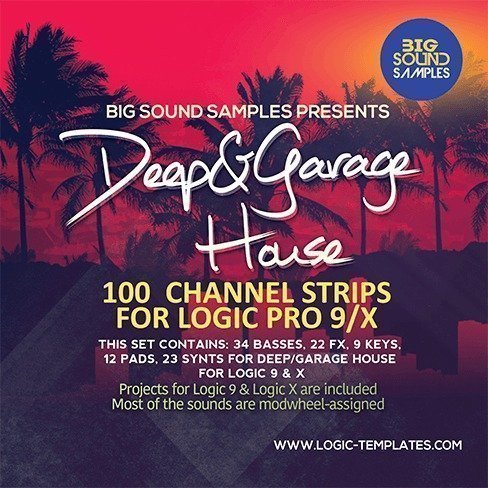
- #Logic Pro 9 Lessons Download Free Avi#
- #Logic Pro 9 Lessons Series Of Markers#
- #Logic Pro 9 Lessons Download For All#
Logic Pro 9 Lessons Download Free Avi
Autocad Civil 3d 2013 64 Bit Free Download panivanez.Play Drums Lessons. Remove WAT V2.2.5.2 Windows 7 Activation.rar ( (EXCLUSIVE)) My Cute Daughter Annika (more Pics), Annika205 iMGSRC.RU anetbry. Fix Children Play, 435463651 iMGSRC.RU. Pc Logic Pro 9 For 64 Cracked Ultimate Iso Torrent Full. Eshwar Rip 1080 Download Free Avi Subtitles Video.

Logic Pro 9 Lessons Download For All
Weighing in at 191.14MB, the package supports languages including. It's the little things that count.Logic Pro Version 9.1, posted on Januon Apple’s Downloads section is a free download for all Logic Pro 9 users. Notice also the subtle improvements in the clarity of the EQ graphs and the bolder line around the area of the Arrange window that has focus.


Logic Pro 9 Lessons Series Of Markers
As with Elastic Audio in Pro Tools, Flex Time is enabled on a track-by-track basis, though it's possible to set individual audio regions on a track to opt out. The Flex Mode button will then appear in the track headers of your audio tracks. If you later wanted a particular bass-drum hit to play slightly earlier, you could simply drag the appropriate Flex Marker to the left and Flex Time would automatically time‑compress the audio preceding the hit, while expanding the hit itself so there was no gap between it and the audio identified by the next Flex Marker.As mentioned already, you might notice the functionality that I'm describing is quite similar to features in competing digital audio workstations, but Apple's implementation has some interesting tricks up its sleeve, especially in the user‑interface department.In order to work with Flex Time, you first need to enable Flex View by clicking the new Flex icon on the toolbar. For example, given a bass‑drum recording, Flex Time will theoretically create these so-called Flex Markers for each bass‑drum hit. You've been able to set audio regions to 'Follow Tempo' since Logic 7, making it possible for Apple Loops and other audio material recorded in Logic to be automatically time-stretched to play back at the Project's tempo, but Flex Time goes much further.Rather than simply time-stretching an audio region, Flex Time analyses audio regions and creates a series of markers at transients that identify musical beats in the audio.
And, after an edit, the waveform outline colour will be coloured orange where an expansion occurred, which makes it easy to see what type of changes have been made. Notice also that audio regions processed with Flex Time gain certain parameters normally associated with MIDI regions, such as Quantise.As you drag a Flex Marker, Logic will shade the backgrounds of the adjacent audio sections orange or green, depending on whether the sections get expanded or compressed. When editing with Flex Time, Logic colour-codes the waveform to indicate where time has been compressed or expanded, making it keep track of your edits. They become clearer, with a solid white line in the foreground, if you drag them or add them manually by clicking, making it easy to see where edits have been performed. Flex Markers are initially shown as light-grey lines behind a waveform, with a green outline where beats have been identified. And with Flex View active, the display of audio regions will change slightly to indicate the effects of Flex Time.
These latter options are great for creating more interesting time-based effects, where you don't want the pristine, utility approach of the other algorithms.The real ace-in-the-hole Flex Mode, though, is Slice. There are also some less typical options, like Tempophone, which emulates the effect of the old tape-based time-stretching machine of the same name, and Speed, where the playback rate of the audio is adjusted, just like a sampler, so the pitch of the audio is also affected. Many Modes Make Time FlexFlex Time offers a choice of several different Flex Modes, each providing a different algorithm for time compression and expansion, optimised for Rhythmic, Monophonic or Polyphonic material. If you're editing the timing of notes on a bass-guitar track, for example, it's thus easy to line them up with hits on a kick‑drum track.
While Pro Tools has Beat Detective, and other applications, like Cubase, have tools to achieve similar results, the ability to slice everything up, have Logic invisibly handle the slices for you, and achieve all of this in essentially a single mouse-click is rather splendid.A particularly nice touch is that when Flex Mode is enabled, audio regions gain the same quantise parameters usually only available to MIDI regions. But the reason why I like this mode so much is that this surely has to be the simplest implementation yet for slicing up audio to correct timing. This is absolutely brilliant if you're working with drum and percussion parts (and maybe even simple bass lines), because you don't have to apply any processing to the sound that might affect the quality, even subtly.
But musically speaking, the integration of EXS24 hasn't previously made any tasks much easier to perform than they would be with another sampler hosted by Logic, such as Native Instruments' Kontakt. Divide & ConquerThe EXS24 sampler has long been a jewel in the crown for Logic users, and its integration with Logic has benefits that are largely transparent to end users: for instance, EXS24 can handle memory and disk scheduling in conjunction with Logic far better than a third-party plug-in sampler would be able to. And although Logic is playing catch-up with these features, I think most Logic users will be glad to have them without the need to resort to murkier areas of the Sample Editor. What's more, this sharing of MIDI functionality to audio works both ways: it's now possible to create a quantise setting from an audio region, which can then be applied to a MIDI region.


 0 kommentar(er)
0 kommentar(er)
